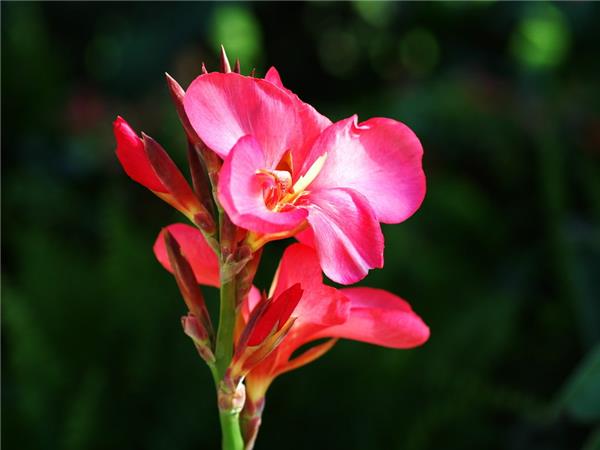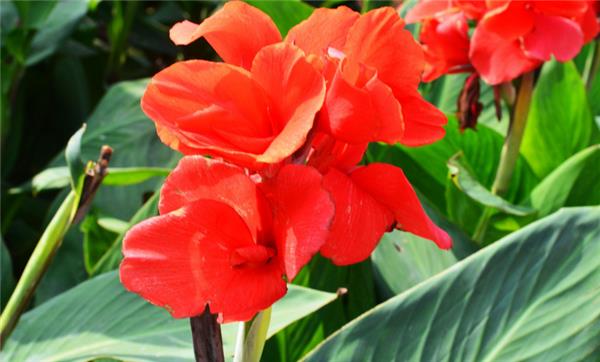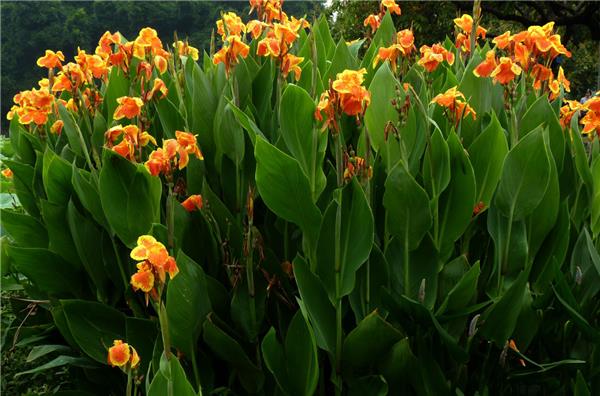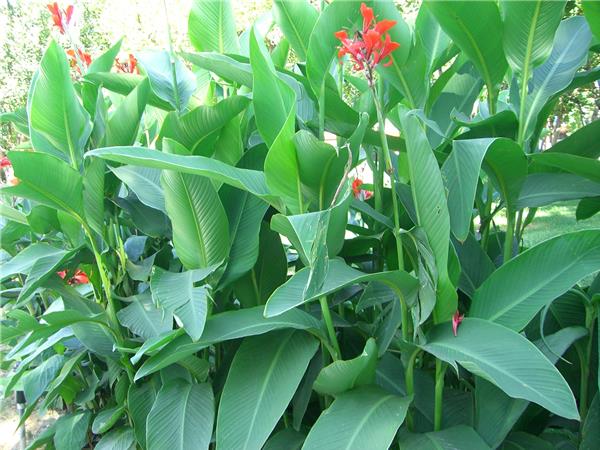[canna language] what is the canna language?
Canna flower type is very simple, the color is very thorough not flowering season leaves wide greatly, so quietly stand in their corner, and not eye-catching but a flowering season, the kind of never hype bright and warm so that all who have ignored them are in front of the gorgeous scalded eyes, Canna the most low-key publicity brought the most high-profile beauty and Canna flower language symbol of a better future very consistent. So what is the flower language of Canna?

Canna's Floral Language: A Solid Future
Canna is native to India and tropical South America and tropical Asia. It is bred by crossing plants of the same genus native to South America and subtropical regions. Like warm and plenty of sunshine, not cold. When planting it, it requires deep and fertile soil, and potted plants require loose soil and good drainage. Fertilize regularly during the growing season. In the north, underground tubers should be dug up before frost and stored at a temperature of about 5℃. Because of its large color Yan, rich in color, good plant shape, easy to cultivate. The optimum temperature for open field cultivation was 13~17℃. The soil requirements are not strict, and it grows best in loose fertile, well-drained sandy loam, and is also suitable for fertile clay soil growth.

South of the Yangtze River can winter in the open field where windbreaks occur. Propagation by division or sowing. Plant division propagation is carried out when bud eyes begin to sprout in April and May, and 2-3 buds of each rhizome are cut into one section for subplanting.

Canna breeding method
Canna, family Canna, native to tropical America and Africa and other places. Canna is a perennial bulbous herbaceous plant with stout, fleshy rhizomes lying underground. There is no dormancy period in warm areas, it can grow annually, and it is most suitable for growth at 22~25℃;5~10℃ will stop growth, and freezing damage will occur when it is lower than 0℃. Canna because of wet, bogey dry, in the hot summer, such as direct sun, or dry hot wind blowing, there will be leaf edge scorched; excessive watering will also occur the same phenomenon. Also known as "red banana","Tan Hua" and so on, is a large flower. Buddhists believe that cannas are made from the blood of Buddha's toes. Canna's floral expression is "solid future." Canna likes warmth and plenty of sunshine, not cold. Requirements of deep, fertile soil, potted soil requirements loose, good drainage. Fertilize regularly during the growing season. The plants are green and grow up to 2 m tall.

Leaves ovate-oblong, 10-30 cm long and up to 10 cm wide. Racemes sparsely flowered; slightly above the leaves; Flowers red, solitary; bracts ovate, green, ca. 1.2 cm; sepals 3, lanceolate, ca. 1 cm long, green and sometimes red; corolla tube less than 1 cm long, corolla lobes lanceolate, 3-3.5 cm long, green or red; outer staminodes 3-2, bright red, 2 oblanceolate, 3.5-4 cm long and 5-7 mm wide, the other especially small, 1.5 cm long and 1 mm wide if present; labellum lanceolate, 3 cm long, curved; Developing stamens 2.5 cm long, anther cells 6 mm long; styles flattened, 3 cm long, half united with filaments of developing stamens. Capsule green, long ovate, with soft spines, 1.2-1.8 cm long. Flowering period: March-December.
Related
- Wuhan Hospital Iron Tree Blooming Result Was Instantly Frightened by the Gardener Master
- Which variety of camellia is the most fragrant and best? Which one do you like best?
- What is the small blue coat, the breeding methods and matters needing attention of the succulent plant
- Dormancy time and maintenance management of succulent plants during dormancy
- Minas succulent how to raise, Minas succulent plant pictures
- What are the varieties of winter succulent plants
- How to raise succulent plants in twelve rolls? let's take a look at some experience of breeding twelve rolls.
- Attention should be paid to water control for succulent plants during dormant period (winter and summer)
- Watering experience of twelve rolls of succulent plants
- Techniques for fertilizing succulent plants. An article will let you know how to fertilize succulent plants.



